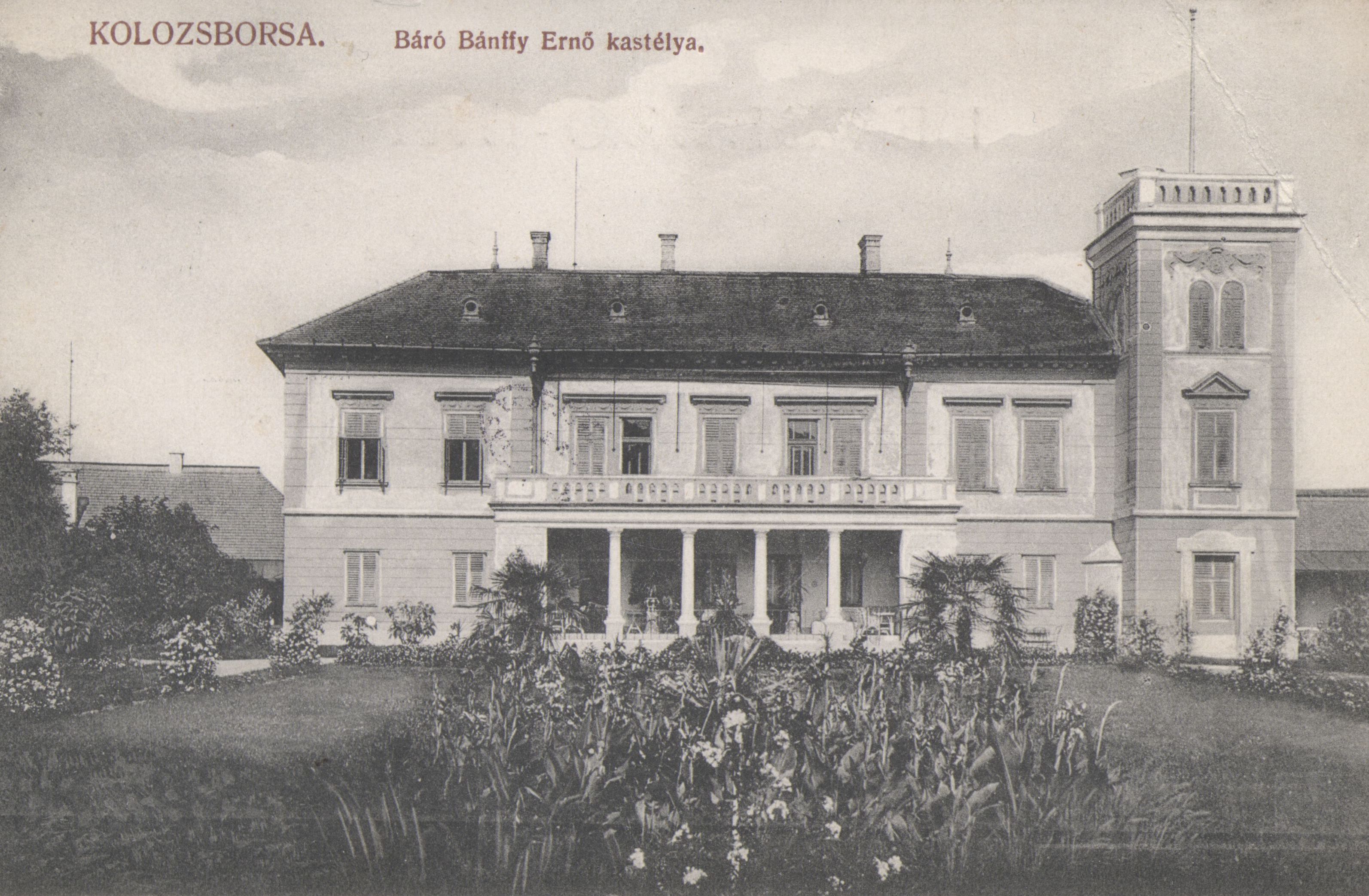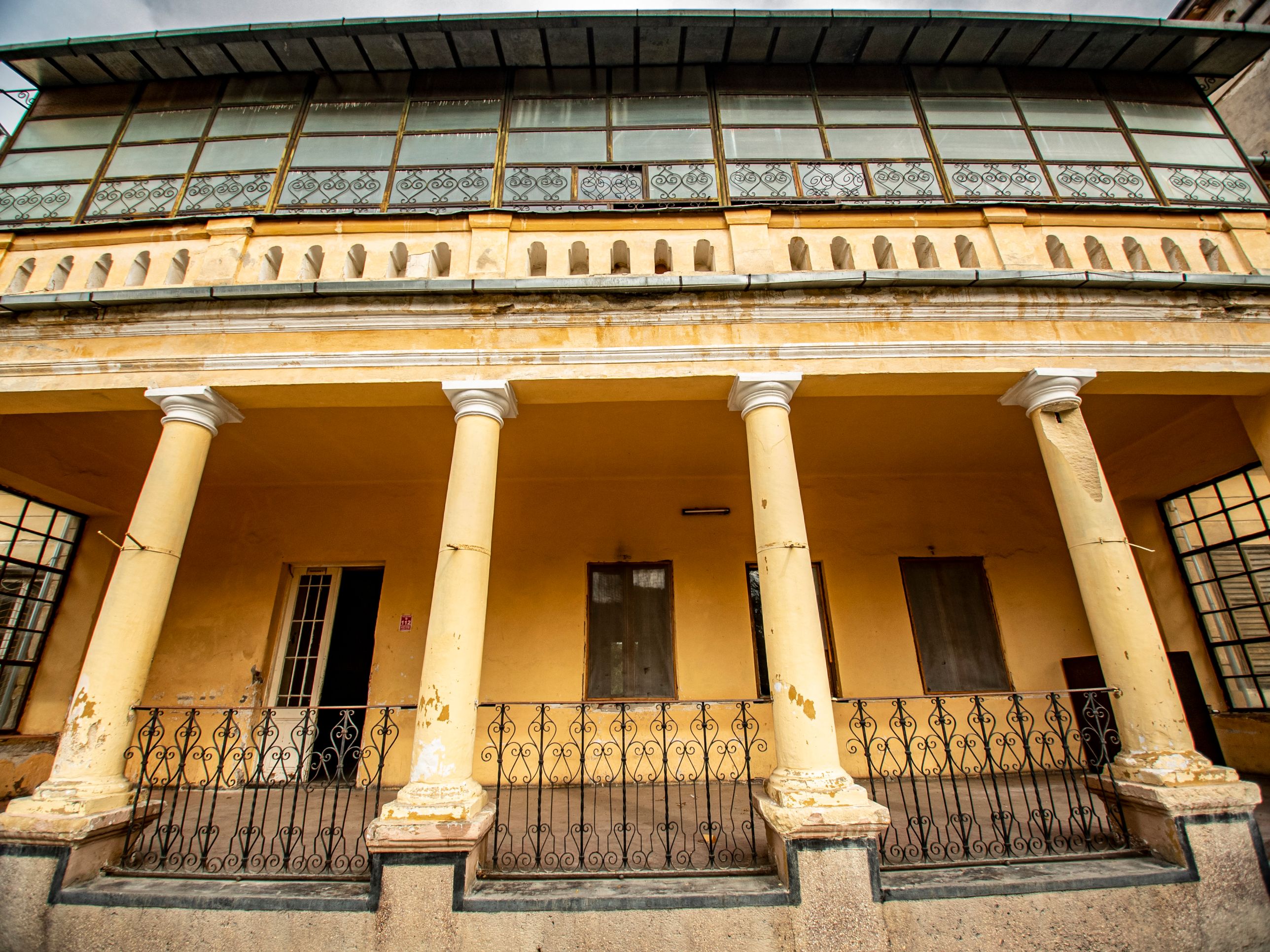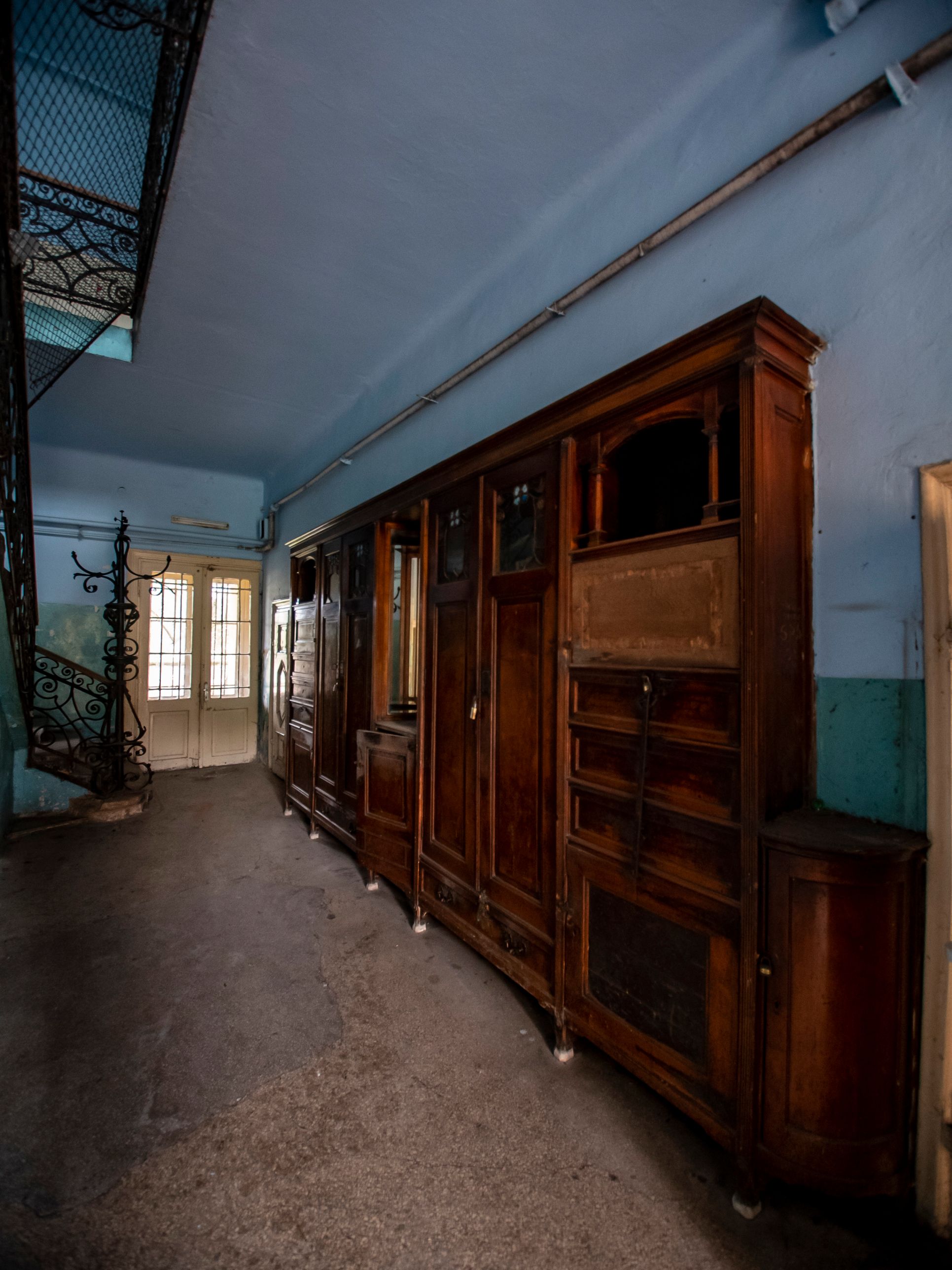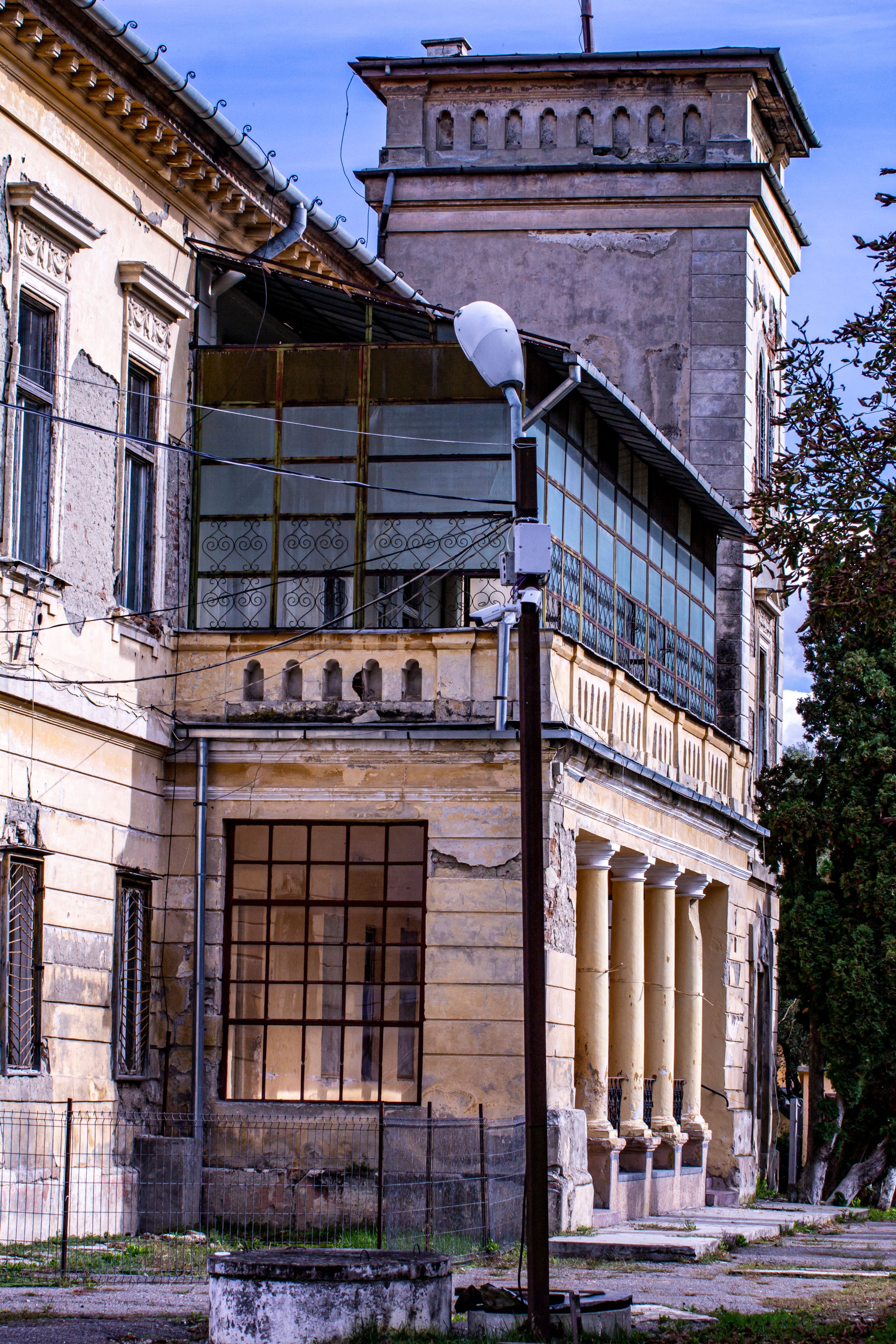The Bánffy Manor House in Borșa
Historic Monument Code: CJ-II-m-B-07536
An estate belonging to the Bánffy family had existed in Borșa Village (mentioned in sources for the first time in 1206) as early as 1367, received as a donation from King Louis the Great, and a family manor house is mentioned in the documents in 1543.
The current house was built in the second half of the 19th century, most likely by Baron Dániel Bánffy (1812-1888) who, after buying other properties to enlarge his estate, settled down at Borșa, after which he transformed and extended the manor house that preceded the current building. The new construction was carried out in Eclectic style (a combination of Neoclassical, Neo-baroque and Neo-renaissance elements), with a slightly elongated rectangular ground plan, completed at the main façade with a portico supported by a row of columns and a terrace above it, as well as with a rectangular tower at the building’s southern corner (its last level functioning as a belvedere). The building was renovated and modernised several times, for example, during the period of the next owner, Baron Ernő Bánffy, at the turn of the 19th and 20th centuries, when it was remodelled; its wrought iron decorative elements and Secession-style furniture pieces dating from this period.
After the building’s nationalisation, a reinforced concrete slab was introduced above the ground floor, partition walls were built, and the portico’s terrace on the main façade was glazed. During this period, an agricultural school functioned here, then a doctor’s office, and from 1957 until 2019 a Hospital for chronic mental illnesses. As the family received back the historic monument and donated it to the Reformed Church of the Lower Town in Cluj, the building is currently closed, but can be visited on request.
The surviving period photographs show us the beautiful park that was once created around the manor house: the main façade was preceded by a parterre area with lawn, flower groups, and exotic potted plants. This was the starting point of the alleys leading to the wooded part of the park, respectively to a sloping area covered with lawn and clusters of trees, as well as a fountain.
Although the parterre in front of the building was modified, losing its original design, and different smaller buildings were later constructed on the sloping part of the park, the forested area was not affected, creating a romantic backdrop to the manor house. The funerary monument of Baron Dániel Bánffy can still be found among the trees, shaped like an obelisk and decorated with the baron’s coat of arms, as well as the following inscription: „Itt nyugszik/ LOSONCZI/ báró BÁNFFY DÁNIEL/ valóságos belső titkos/ tanácsos/ a páratlan férj és apa/ kinek emlékét/ hálával áldják/ neje/ GYÁRFÁS ANNA/ és fiai/ DEZSŐ, JENŐ, ERNŐ/ született/ 1812. május 14-én/ meghalt/ 1888. april 29-én”. (Approximat translation: Here lies Baron Dániel Bánffy, internal counsellor, exceptional husband and father, his memory being blessed by his wife, Anna Gyárfás, and his sons, Dezső, Jenő, and Ernő).
Extra:
- Baron Ernő Bánffy (1850-1916), the third son of Dániel Bánffy and younger brother of Dezső Bánffy – Prime Minister of Austria-Hungary (1895-1899) – inherited the Borșa estate after his father’s death. In 1876 he married Countess Cecília Esterházy (1857-1946), with whom he had two daughters, Anna and Erzsébet (the latter dying at only 13 years of age). As he was not interested in politics, the baron lived relatively secluded and preferred to have local concerns. The family spent their summers in Borșa, and during the winter they lived in the Esterházy House in Cluj (Universității Street). In 1896, when the marriage of Anna and Count Ferenc Teleki was announced, it was considered a sensational event, as the union between the two – Bánffy and Teleki – families had been a rarity ever since the 1674 execution of Denis Bánffy (the initiator of the Renaissance castle in Bonțida), an unfortunate event attributed to the “treacherous political practices” of Chancellor Michael Teleki and to his influence on Prince Michael Apafy I.
- After the death in 1916 of Baron Ernő Bánffy, his widow, Countess Cecile sold the manor house in Borșa to relatives, preferring to live in the Esterházy parental house in Cluj and to take care of her grandchildren. The distinguished lady of the house was an important figure of the cultural life in Cluj. She often received guests in her drawing rooms furnished in Empire style. She was known to be extremely cultivated, spoke several languages, was interested in philosophy, history and art, and was passionate about theatre, knowing by heart almost all of Molière’s plays. Moreover, she was consulted by theatre director Jenő Janovics regarding the direction of the plays that were staged.

National Széchényi Library – Collection of Posters and Small Prints





